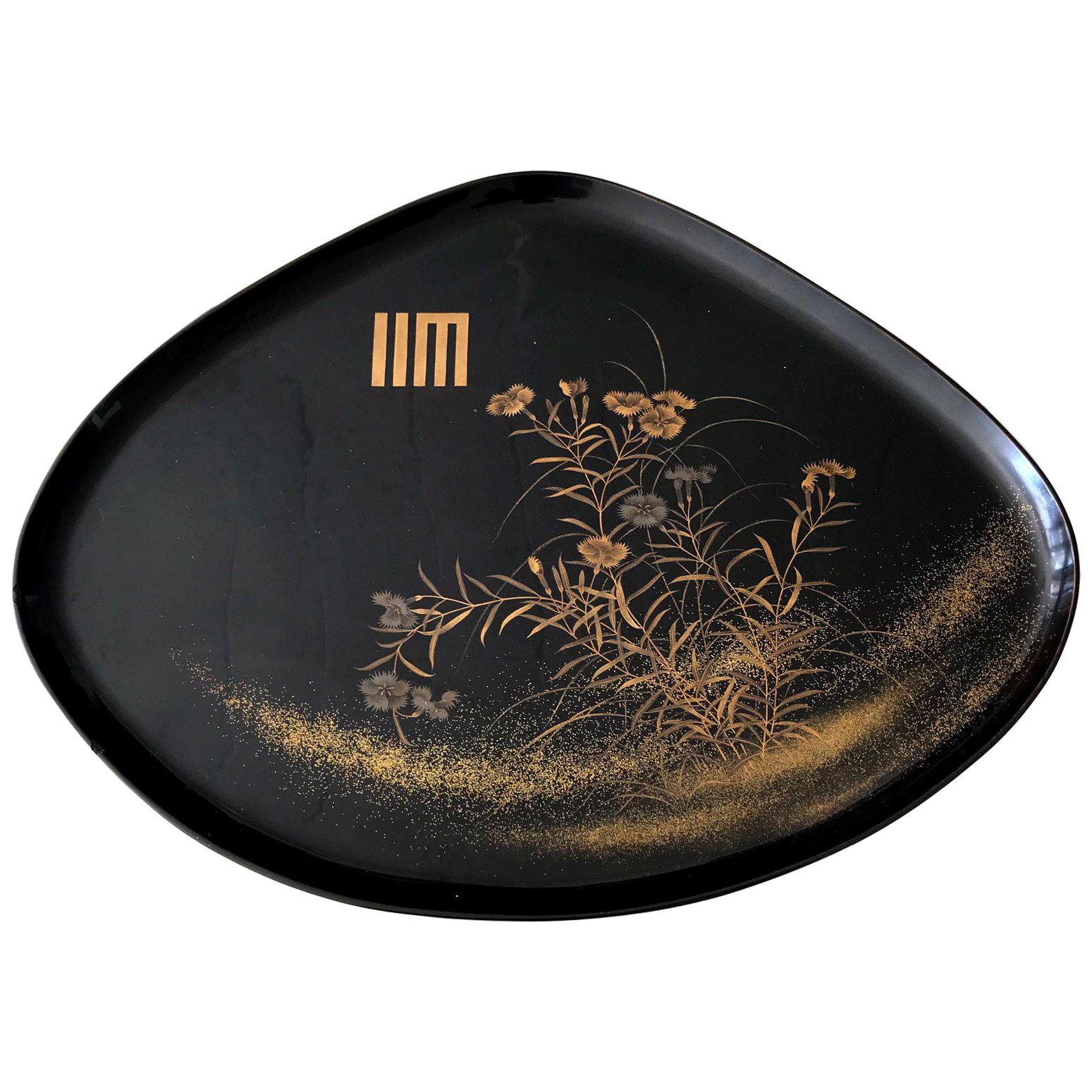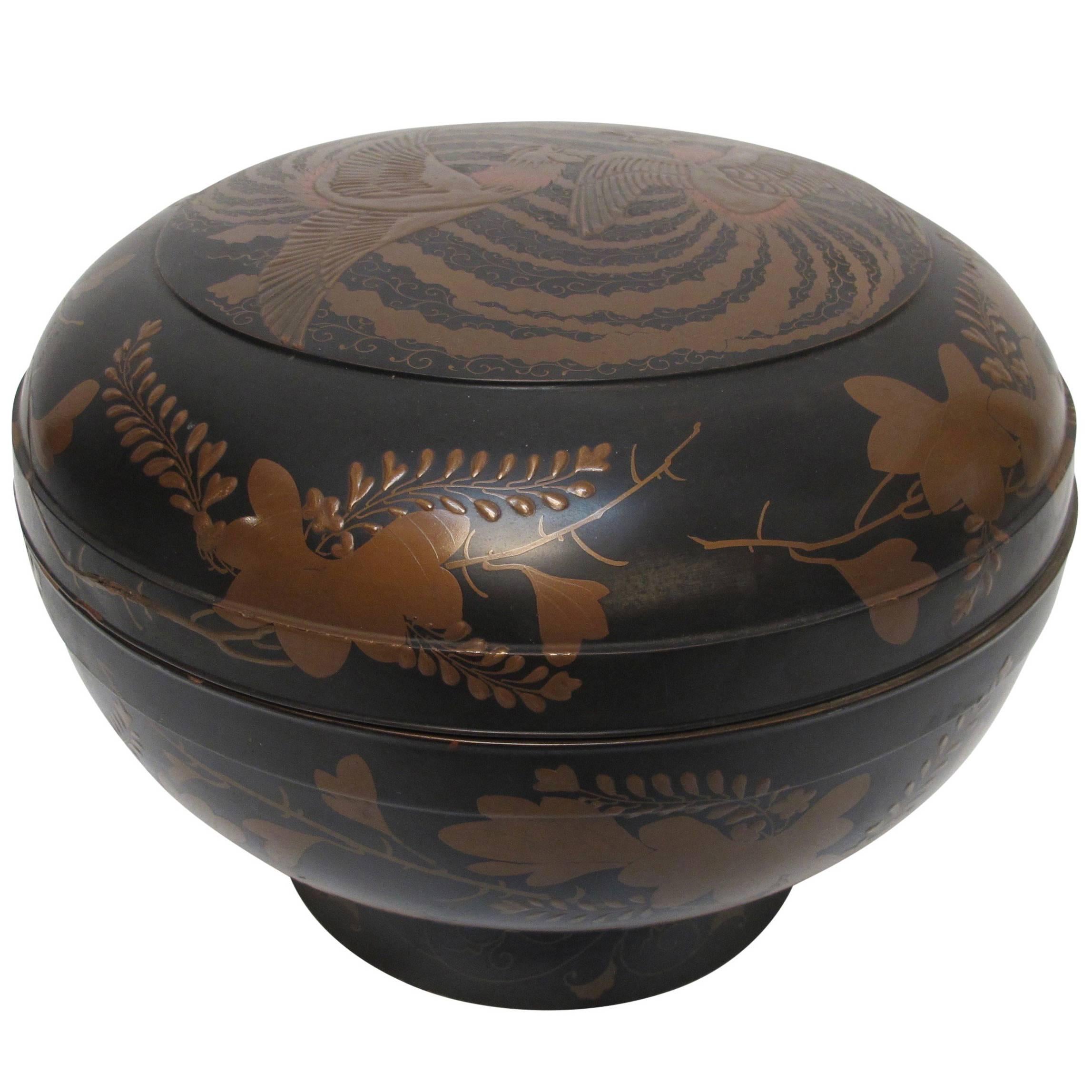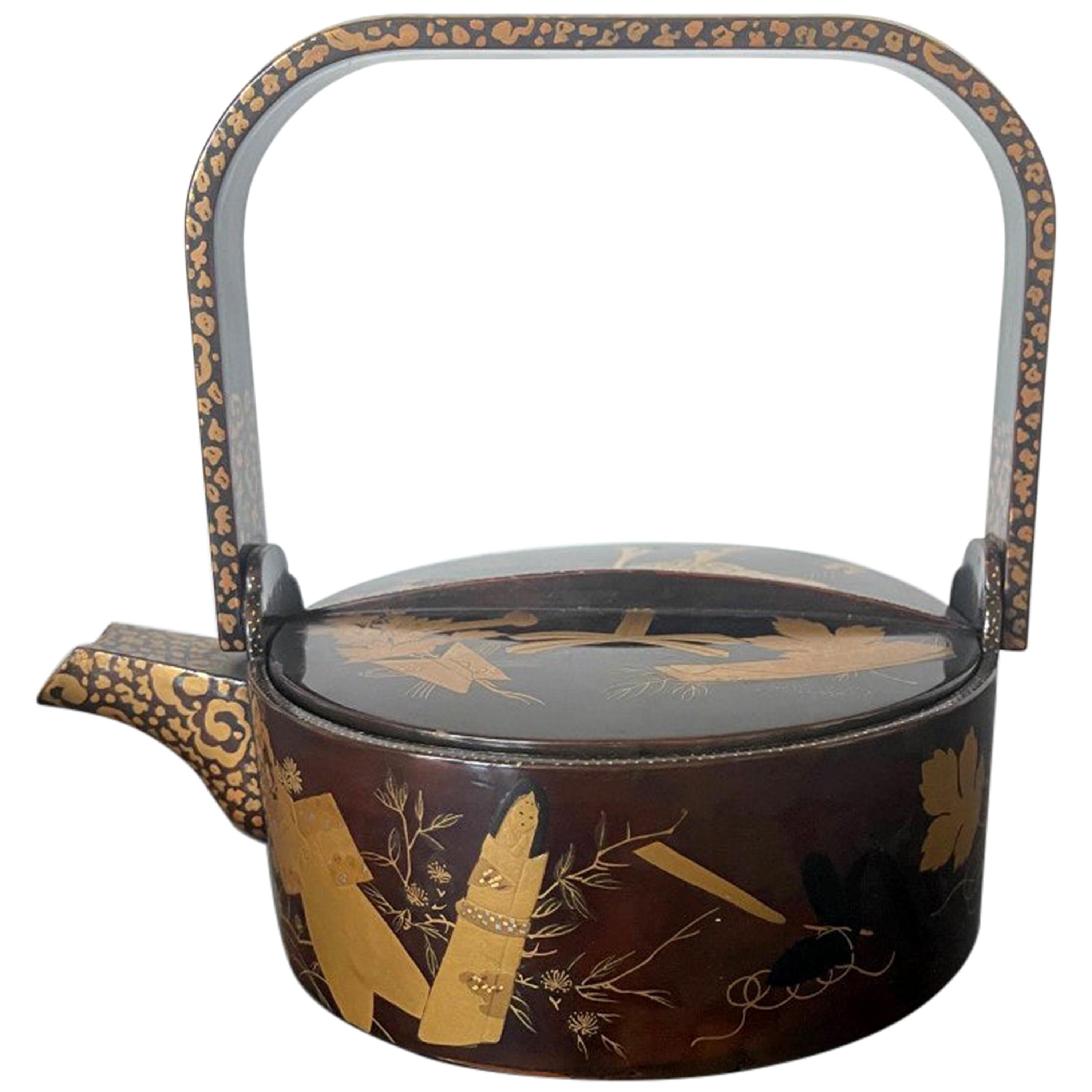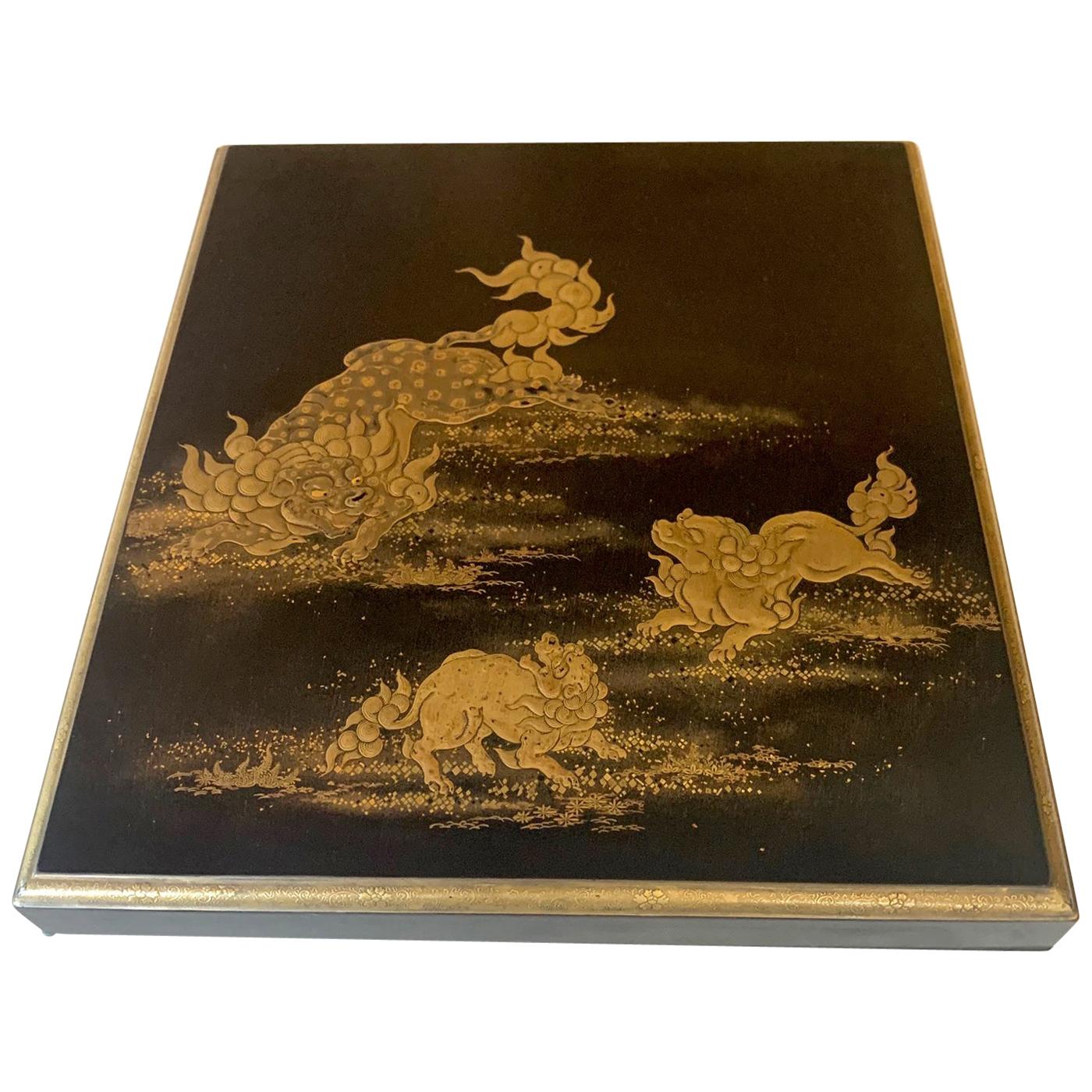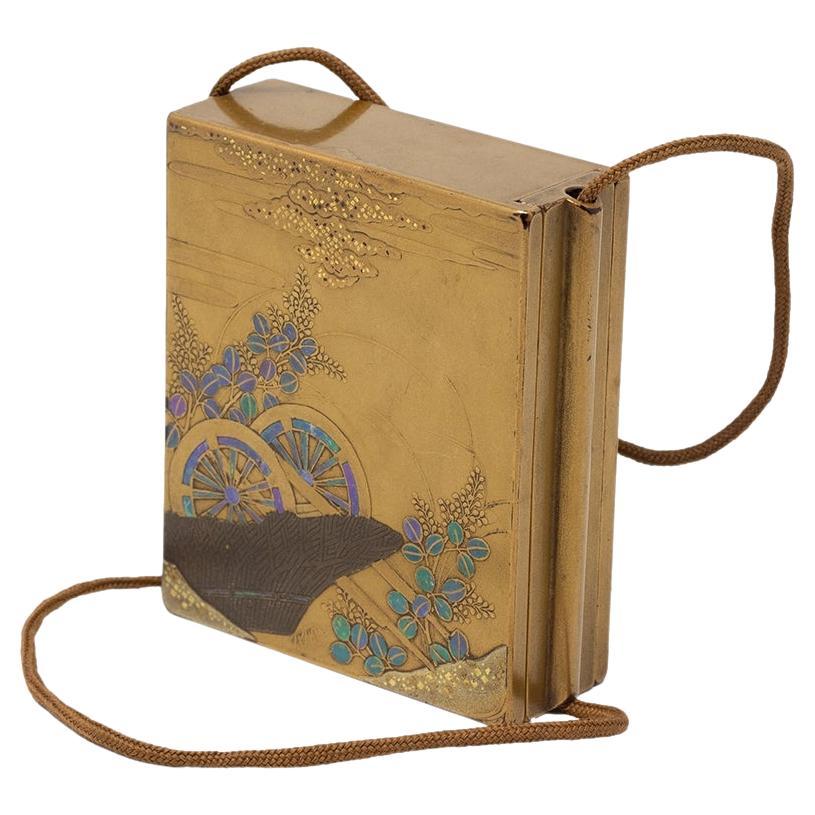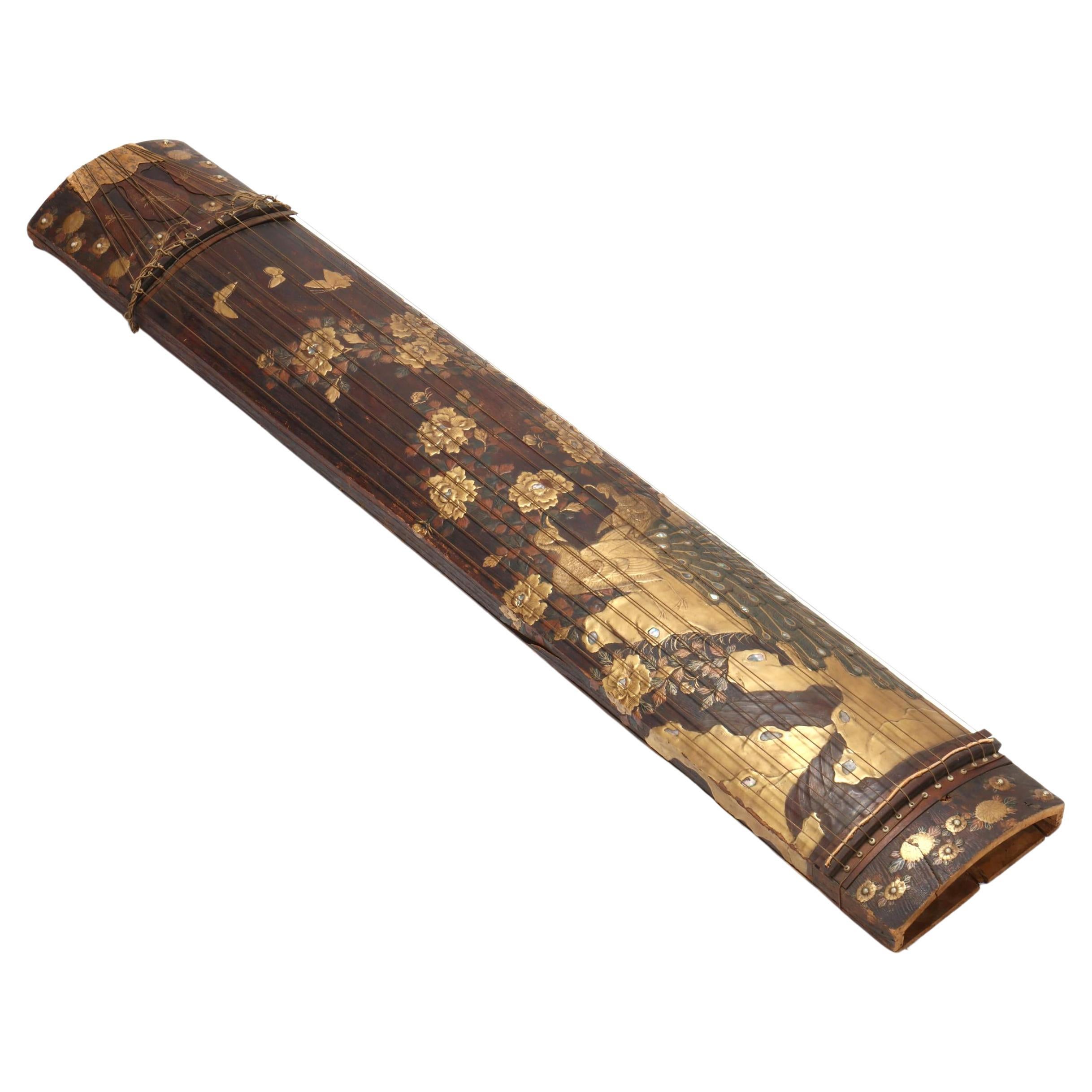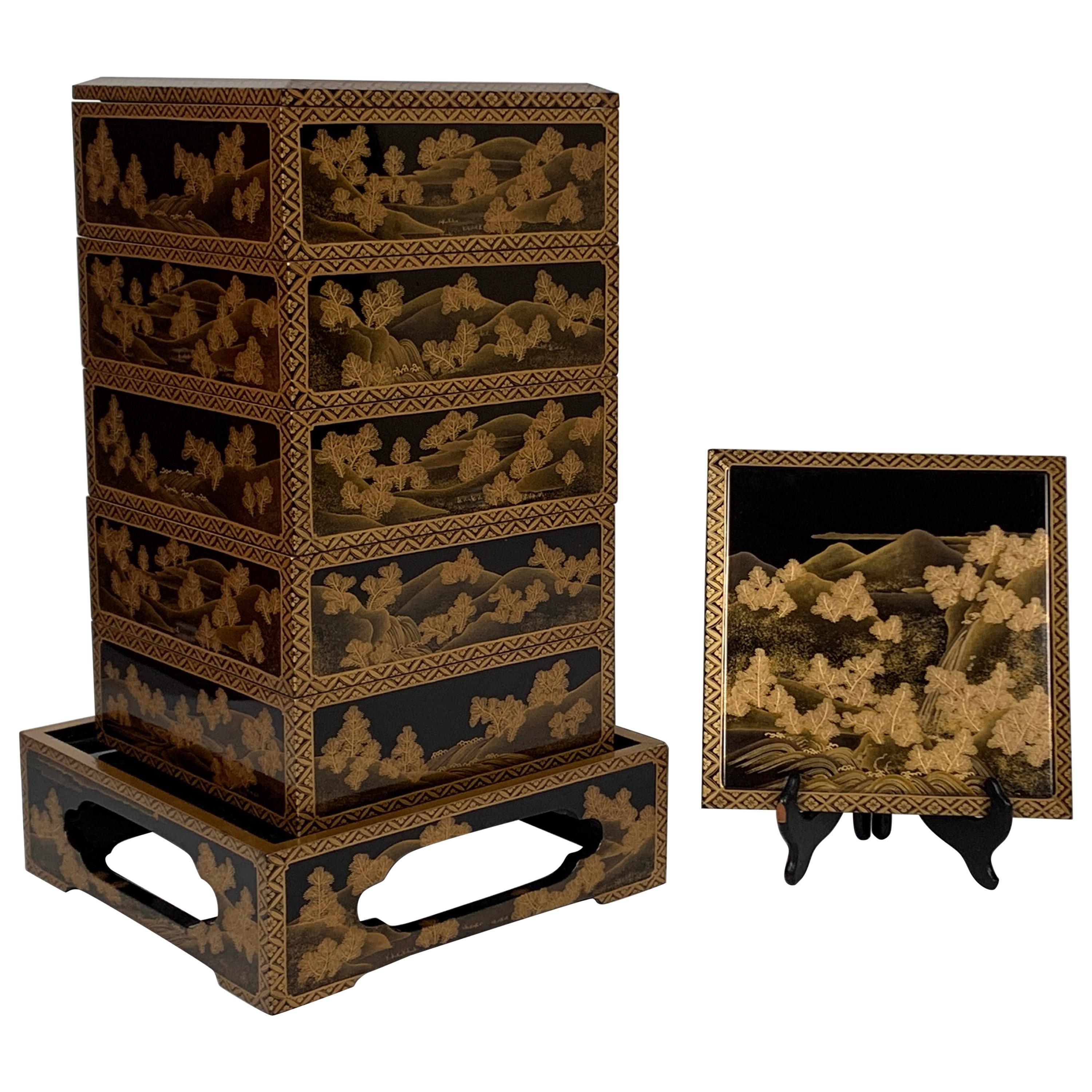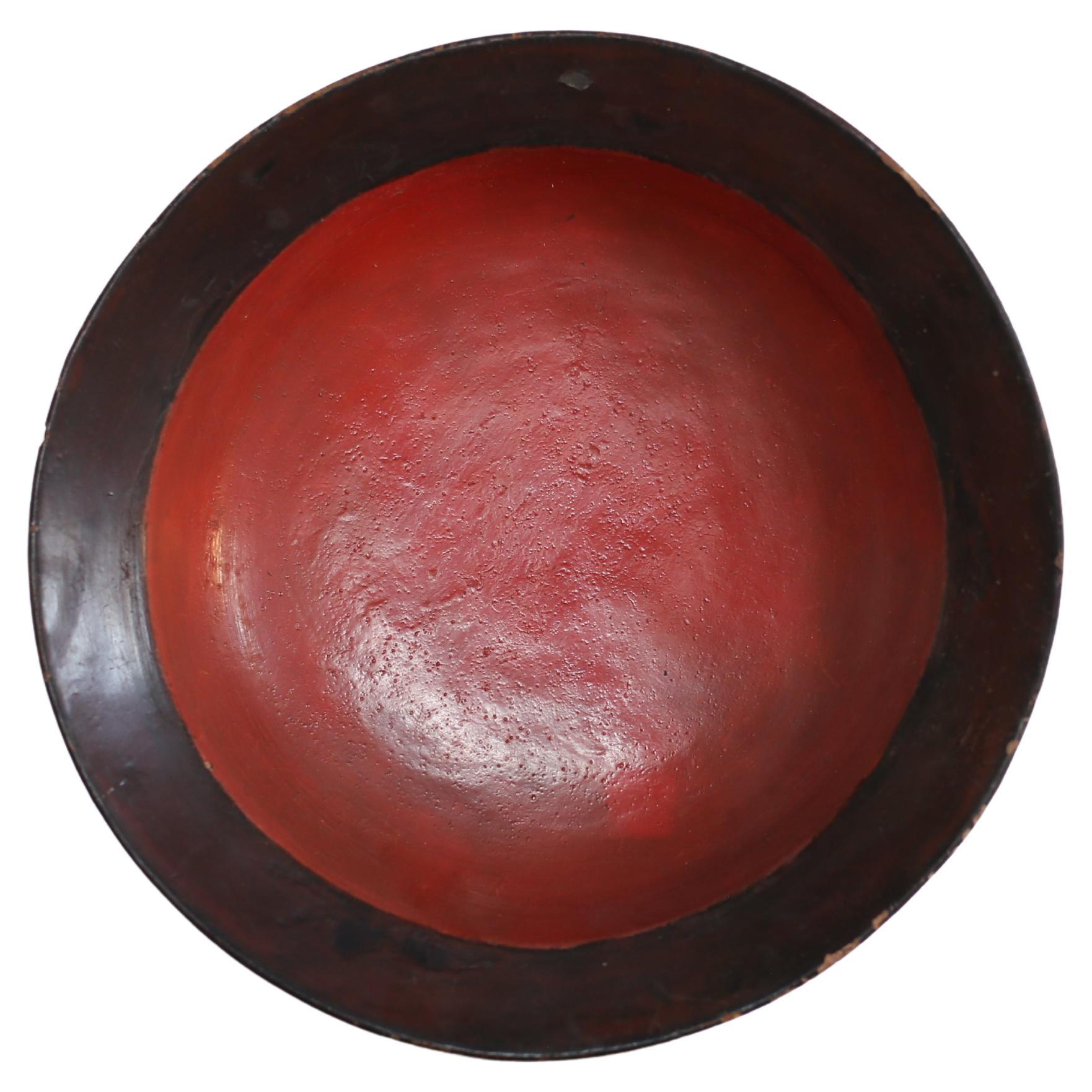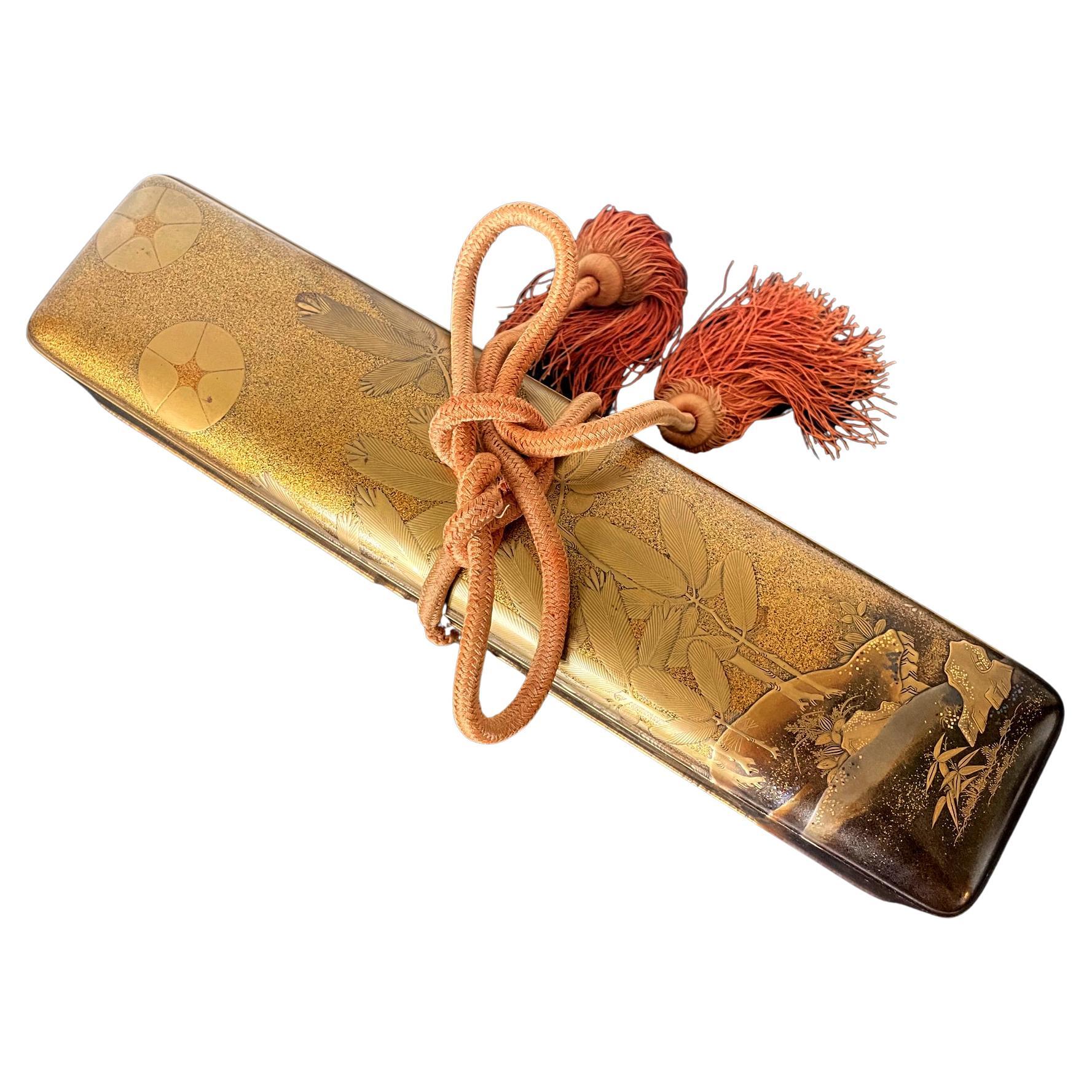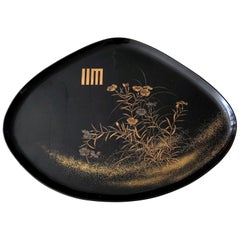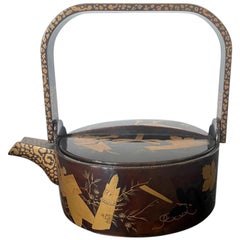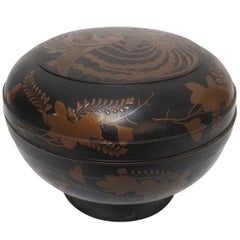
Large Japanese Lacquer Inro with Maki-e Landscape Meiji Period
View Similar Items
Want more images or videos?
Request additional images or videos from the seller
1 of 11
Large Japanese Lacquer Inro with Maki-e Landscape Meiji Period
About the Item
- Dimensions:Height: 3.5 in (8.89 cm)Width: 3 in (7.62 cm)Depth: 0.8 in (2.04 cm)
- Style:Japonisme (Of the Period)
- Materials and Techniques:
- Place of Origin:
- Period:
- Date of Manufacture:19th Century
- Condition:Wear consistent with age and use. Maki-e surface is well preserved with some minor rubbing and losses of gilt, roughness on some spots along the edge, a few small impact dings on the top.
- Seller Location:Atlanta, GA
- Reference Number:1stDibs: LU945020674742
About the Seller
5.0
Platinum Seller
These expertly vetted sellers are 1stDibs' most experienced sellers and are rated highest by our customers.
Established in 2006
1stDibs seller since 2010
479 sales on 1stDibs
More From This SellerView All
- An Antique Japanese Lacquer Maki-e TrayLocated in Atlanta, GAA fan shape black lacquer tray from Japan circa 1910-30s, late Meiji to early Showa era. Elaborated decorated with a bundle of yomogi blossom in a very fine Maki-e technique using both gold and silver powders. There is a Japanese symbol on the top left, which represents yomogiu, stemming from yomogi (蓬), a wild plant that belongs to the chrysanthemum family and widely grown in Japan. This name yomogui is from a scene in the Tale of Genji...Category
Early 20th Century Japanese Japonisme Lacquer
MaterialsLacquer
- Large Japanese Lacquer Tray with Maki-e Carp Design Meiji PeriodLocated in Atlanta, GAA large rectangular tray with scalloped corners and slightly raised gallery rim circa late 19th century to early 20th century (end of Meiji period). The center image showcases a live...Category
Early 20th Century Japanese Japonisme Lacquer
MaterialsLacquer
- Japanese Lacquer Maki-e Sake Ewer Meiji PeriodLocated in Atlanta, GAA Japanese lacquered wood sake ewer with maki-e design, circa late 19th century, Meiji period. The nicely decorated lacquerware is of a Classic sake ewer for...Category
Antique 1890s Japanese Japonisme Lacquer
MaterialsLacquer
- Japanese Lacquer Box with Fine Maki-e Decoration Meiji PeriodLocated in Atlanta, GAA lacquered wood box with lid from Japan circa 19th century Meiji Period. The finely decorated box was used to store paper slips and small documents on the desk. It is overall finished with black lacquer (kuro) with sparse Mura-Nashiji effect outside and on the top surface of the lid, there are three Komainu, (sometimes known as Shishi or Japanese lions) frolicking and forming a circle in lively motion. Komainu are auspicious animals in Japanese cultures in both Shinto and Buddhism tradition. Originally from China, these animals symbolizes guardians to ward off evil spirits. Hiramaki-e was used in combination with carving and combing to render the lions with various surface textures. A gilt border with an slight angle was given to the lid and even the thin band is decorated with miniature floral scrolls. The interior of the box was finished in a dense nashiji. Underneath the lid, a cluster of peonies open lavishly by two gentle mounts. Takamaki-e (high relief) in both gold and silver were...Category
Antique Late 19th Century Japanese Japonisme Lacquer
MaterialsWood, Lacquer
- Japanese Meiji Han Koto with Maki-e Lacquer DecorationLocated in Atlanta, GAA rare Japanese Koto made from carved Paulownia wood and lavishly decorated with lacquer Maki-e circa late 19th century of Meiji Period (1868-1912). The ...Category
Antique Late 19th Century Japanese Japonisme Lacquer
MaterialsWood
- Japanese Lacquered Gold Maki-E Naga Fubako Meiji PeriodLocated in Atlanta, GAA Japanese lacquered wood Naga Fubako (a long box used to store document or large scroll painting), circa 19th century Meiji period. The rectangular box features an unusually deep lipped lid with slightly rounded corners, a conforming lower box with bronze medallion rings with tasseled...Category
Antique 19th Century Japanese Meiji Lacquer
MaterialsWood, Lacquer
You May Also Like
- A Japanese maki-è lacquer inroLocated in Milano, ITJapanese inro with two compartments, in maki-è lacquer with nashiji decorations and circular reserves depicting flowers and leaves. Coral colored ojime and lacquer manju netsuke. Si...Category
Antique Mid-19th Century Japanese Japonisme Lacquer
MaterialsLacquer
- Japanese Meiji Period Lacquered Lidded BowlLocated in San Francisco, CAA large Japanese Meiji period lacquered lidded soup or rice bowl. Beautiful hand-painted decoration inside and out.Category
Antique Late 19th Century Japanese Lacquer
MaterialsLacquer
- Japanese Meiji Period Lacquer Six Drawer InroLocated in Newark, EnglandThe Inro is decorated with a gold lacquer base and features mother of pearl shell inlay leaves surounding wheeled cart with foliage. The Inro with a slide action opening which hides ...Category
Antique Late 19th Century Japanese Meiji Lacquer
MaterialsRope, Lacquer
- Japanese Maki-e Lacquer Stacking Box, Jubako, Meiji Period, JapanLocated in Austin, TXA fine and impressive Japanese gold maki-e decorated black lacquer five-tier jubako with presentation tray, two lids, and the original tomobako storage box, Meiji period, late 19th c...Category
Antique Late 19th Century Japanese Meiji Lacquer
MaterialsLacquer
- Old Round Plate with Japanese Lacquer / Meiji-Taisho / UrushiLocated in Sammu-shi, ChibaA wooden vessel used from the Meiji era to the Taisho era. Probably a beech tree. It is made by hollowing out. It's very cool, isn't it? It is a lacquered tall foot round tray made ...Category
Mid-20th Century Japanese Taisho Lacquer
MaterialsBeech, Lacquer
- Old Work Bowl with Japanese Lacquer / Meiji-Taisho / UrushiLocated in Sammu-shi, ChibaA wooden vessel used from the Meiji era to the Taisho era. Probably a beech tree. It is made by hollowing out. It's very cool, isn't it? It is a round bowl made of one piece of wood...Category
Mid-20th Century Japanese Taisho Lacquer
MaterialsBeech, Lacquer

